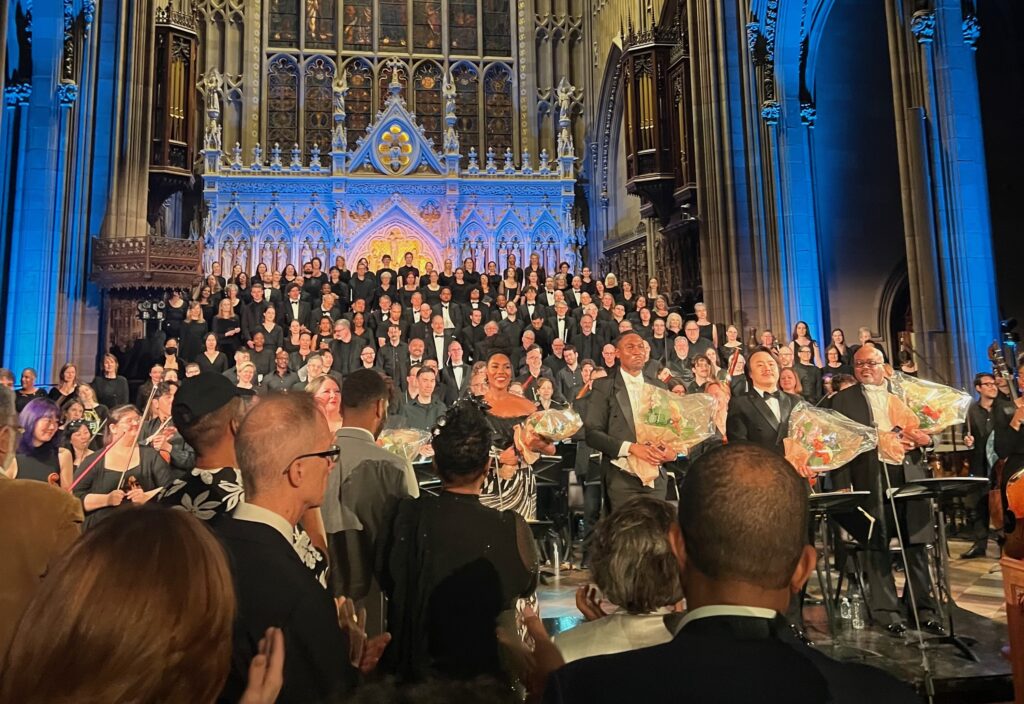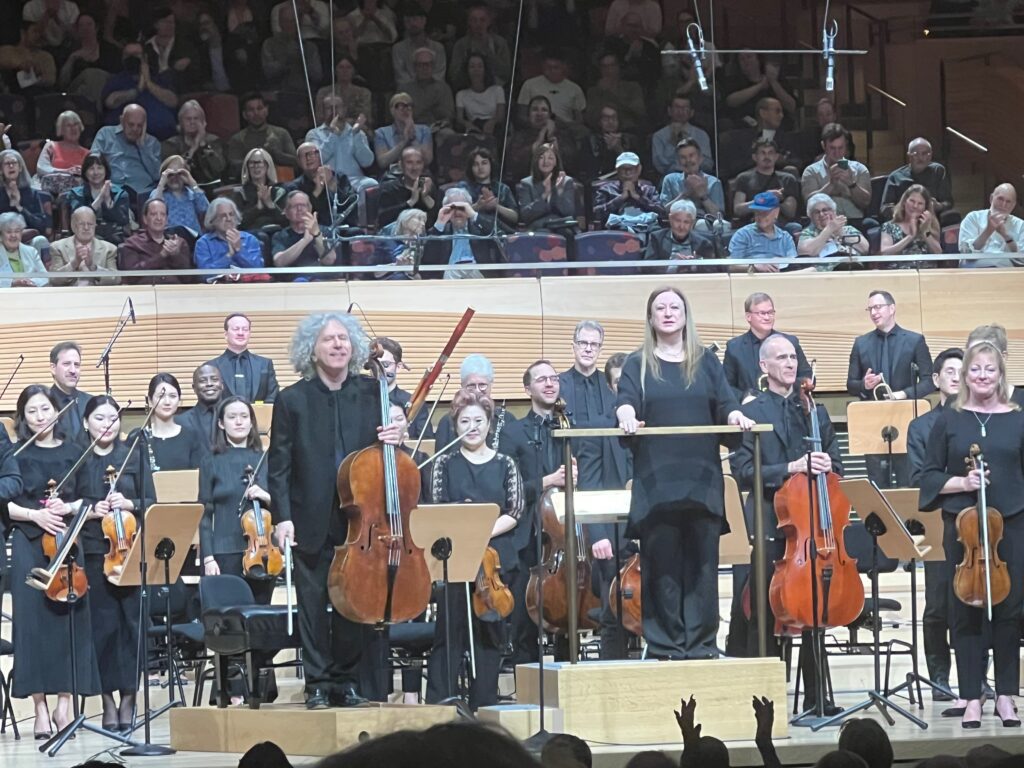VIEWPOINTS – Classical Music Roundup: A resounding VERDI’S REQUIEM at Trinity Church and a satisfying NY PHIL outing led by Simone Young
- By drediman
- May 2, 2025
- No Comments
In the realm of classical music, I recently attended a pair of concerts by local ensembles that reminded me once again that we live in a true capital of culture. Read on for my thoughts on these satisfying nights of music.

VERDI’S REQUIEM
Trinity Church NYC and The Dessoff Choirs
Through May 2
To celebrate its centennial, The Dessoff Choirs has teamed up with Trinity Choir, Downtown Voices, and the music ensemble NOVUS to present a resounding version of Giuseppe Verdi’s thunderous Requiem (HIGHLY RECOMMENDED). As a sort of prologue to the main event, the evening began with the world premiere of It’s a Journey by Pulitzer Prize-winning composer Tania León. Commissioned especially for this landmark anniversary, the piece was like the calm before the storm — a subtle choral composition that uses text from Nikki Giovanni‘a poem A Journey to inspire contemplation. Verdi’s Requiem is a work of practically operatic proportions that’s both harrowing and distinctly emotive. The piece often times feels more entrenched in raw human emotions than it does with sacred tradition, unfolding with the drama of an opera as opposed to the ritual of mass. Indeed, hearing it live can often be an overwhelming experience (memories of Riccardo Muti and Teodor Currentzis conducting the piece for the Chicago Symphony Orchestra and musicAeterna, respectively, quickly come to mind), and last night’s rendition was no exception. Conducted with a firm grasp by Grammy-nominated conductor Malcolm J. Merriweather — who is the director of the New York Philharmonic Chorus, as well as the music director of The Dessoff Choirs — and featuring a luxurious set of soloists, the work once again hit with tidal force. Throughout, the NOVUS musicians and the massive combined chorus responded to Merriweather with excitement and energy, and there were several moments when I felt completely engulfed in the music (thanks in part to some ingeniously placed brass players). The final twenty minutes were incredibly powerful, beginning with a forceful final Dies irae and continuing with a sublime Requiem aeternam in which the four accomplished soloists — Angela Meade, J’Nai Bridges, Won Whi Choi, and Kevin Short — raised their voices in glorious counterpoint. But best of all was Meade’s blistering Libera me, which the American soprano navigated with both effortless power and searing intensity.

NEW YORK PHILHARMONIC
David Geffen Hall
Through May 3
This week at David Geffen Hall, Australian conductor Simone Young has returned to conduct the New York Philharmonic in a satisfying if safe program comprised of Schoenberg’s Notturno for strings and harp, Robert Schumann’s Cello Concerto, and Bruckner’s mighty Sixth Symphony (RECOMMENDED) (I had seen Young conduct a decidedly more interesting program with the Philharmonic five years ago, which included the New York premiere of Brett Dean’s fantastic Cello Concerto). The concert commenced with Schoenberg’s Notturno, a sweetly lyrical early-career work that finds the composer basking in the late-Romantic era, miles away from the atonality that would become his signature musical style. Lasting a brief five minutes, the piece was the perfect palette cleanser for what was to come. Then came Schumann’s tortured Cello Concerto featuring soloist Steven Isserlis. The work is a searching and inward looking piece that unfurls in three movements that fluidly flow from one to the next. Luckily, soloist Steven Isserlis was more than up to the task, performing with both openness and intensity — feeling the work’s many textures and moods with the utmost sensitivity — even if the New York forces couldn’t match his zeal and personality. The acclaimed British cellist also handled the work’s tricky interlinked structure with intelligence, pacing the concerto with both insight and a great deal of enthusiasm. The program concluded on a more heroic if conventional note with Bruckner’s sprawling but shapely Sixth, one of the composer’s most distinctive and accessible symphonies. Throughout, Young’s conducting was confident and forward-leaning, relying on the sturdy structure of the symphony (Young is known for her interpretations of Bruckner symphonies). Here, each movement serves a clear purpose — the Adagio (the second movement) is especially gorgeous — and the New York forces responded to the work’s grand gestures with even playing that produced a natural sound that didn’t overpower it.

 Copyright © 2025
Copyright © 2025
Leave a Reply